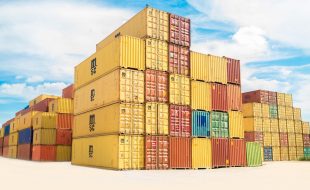Table Of Contents
Sustainable Strategies For Dust Control And Safety In Construction: Integrating Best Practices And Technology
Last Updated on: November 14th, 2024
Dust control is critical to ensuring worker safety and environmental sustainability.
Also, it is a significant element of compliance with the construction industry’s Occupational Safety and Health Administration (OSHA) regulations. Using sustainable strategies that integrate OSHA guidelines, best practices, and advanced technologies creates a comprehensive approach to managing dust.
By implementing these strategies, construction companies can mitigate health risks and promote a safer work environment. Ultimately it can meet regulatory requirements and reduce its ecological footprint, contributing to overall sustainability in the industry.
Is Construction Dust Harmful?
According to an observation on the harmful effects of dust in the construction industry, some concerning newed evolved out. The study says that around 380,000 Canadians were exposed to Silica’s harmful effects from the construction industry. Additionally, around 152000 people were affected by Asbestos, another material predominantly used in the construction industry. Yes, you got it right. The construction sites’ dust accumulation results in the form of physical risks.
Some of the most common dust-related ailments include lung cancer, Asthma, Hypertension, Cardiovascular disease, Chronic obstructive pulmonary disease, and lung cancer.
It’s high time that the stakeholders of the real estate industry resort to measures that curb the health and environmental impact.
Sustainable Strategies For Dust Control And Safety in Construction
Sustainability is and needs to be the mantra for the stakeholder directly involved in the construction sector. They are looking to implement a measure that would protect the health of the workers and curb the harm that dust causes to the environment. This section discusses some of the sustainable strategies that integrate the best of industry practices.
High-Efficiency Dust Collection Systems
Dust collection systems are essential equipment that ensures workplace safety in the construction industry while complying with OSHA regulations. These systems efficiently capture and remove airborne dust particles, particularly hazardous silica dust, protecting workers’ health.
These systems are equipped with powerful vacuums, and dust collection systems are engineered to handle heavy-duty tasks like cutting and grinding. The systems work where there is significant dust generation and minimize exposure to dust.
They feature dust shrouds or hoods to capture dust at the source, while efficient filters like HEPA filters trap fine particles. Proper tool training and education on safe use and workplace practices complement these systems. They ensure osha compliance and maintenance of a healthy and safe working environment.
Wet Dust Suppression
Wet dust suppression is a highly effective technique for reducing airborne dust in construction. Minimizing dust generation involves applying water or water-additive mixtures to construction materials, work surfaces, or dust-prone areas. Erizon dust suppression systems, for example, use wet spray applications that form a hard barrier, reducing dust pollution in various industries. Other systems involve sprinklers or misting systems that can be automated or manually operated to control dust at its source.
The method helps mitigate health risks, improve visibility, and maintain a safer work environment. It’s beneficial for tasks like cutting, grinding, or demolition. Wet dust suppression tools include water tanks, pumps, and nozzle attachments.
Compliance with legal requirements, including OSHA compliance training and regulations, ensures proper dust control measures on construction sites. Also, they contribute to a cleaner and healthier construction environment.
Personal Protective Equipment (PPE)
Personal Protective Equipment (PPE) ensures worker safety, especially in environments with high concentrations of airborne particles like dust. OSHA guidelines require employers to provide workers with suitable PPE, including respiratory protection such as dust masks or respirators.
These protective devices should adequately fit and ensure consistent use in dust-prone environments. Other examples of PPE for dust control include safety glasses. They protect the eyes, gloves to prevent skin contact, and coveralls or protective clothing to minimize dust exposure. Standards on PPE ensure the effectiveness and quality of these protective measures, safeguarding workers’ health and well-being.
PPE can also be used in conjunction with other strategies for dust control, including wet dust suppression and the use of dumpsters. Whether your employees are working on one of these common construction projects that will likely require a dumpster or something else altogether, a dumpster can facilitate the quick clearing of waste likely to create a lot of dust. As such, dumpsters can be an affordable solution for smaller projects that produce large amounts of dust and debris, and can also provide an effective health protection strategy when paired with PPE.
Scheduled And Real-Time Dust Monitoring
Scheduled and real-time dust monitoring are vital exposure control methods in the construction industry. Regular self-monitoring involves periodically assessing dust levels to identify areas of high concentration and potential exposure risks. That allows for informed decisions regarding control strategies and necessary adjustments.
Real-time dust monitoring systems provide immediate feedback on dust levels, continuously measuring and analyzing dust concentrations using sensors and data analysis techniques. These systems can identify areas where control measures may need adjustment and trigger alarms when dust levels exceed acceptable limits. By implementing these monitoring methods, construction companies can proactively manage dust control and protect workers’ health effectively.
Worker Training And Education
Worker training and education are essential components of OSHA guidelines to promote safety in the construction industry. Authorized trainers provide comprehensive programs, such as the 10-hour online course or 30-hour OSHA training. The training focuses on dust control measures and safe work practices.
Training covers proper techniques, equipment usage, and the importance of industrial hygiene to enhance worker awareness and compliance. Ongoing training ensures workers are current on new technologies, best practices, and changes in OSHA regulations. Certifications obtained through these programs benefit companies and employees by demonstrating compliance, improving workplace safety, and increasing employee employability.
Mulch And Vegetation
In recent times one of the most effective measures that evolved is mulching and vegetation. It s a strategy, an eco-friendly way of protecting the sole from wind and water erosion. As per observations, mulch and foliage are highly effective, and the curb erosion is upto around 80% if one uses the technique. Though this dust management requires properly coordinated efforts, the efficacy of this particular technique can not be undermined.
Hence the stakeholders need to take these sustainable strategies that can prevent the health of both the people and nature. It is indeed one of the most important steps towards a better tomorrow in the construction sector.
Takeaway
Construction companies can create a safer and healthier work environment by implementing high-efficiency dust collection systems, wet dust suppression techniques, providing appropriate PPE, and offering comprehensive worker training. These sustainable practices help protect workers and also contribute to a greener industry.
However, using quality dust collection systems and personal protective equipment (PPE) is crucial for effective dust control and ensuring worker safety in the construction industry. Embracing these strategies ensures the long-term success of construction projects while prioritizing safety and sustainability by minimizing airborne dust, protecting workers from respiratory hazards, and complying with safety regulations.
Additional:














